BETHESDA, Md. (Army News Service, June 5, 2008) - On May 3, 2007 in Iraq, Spc. Freddy Meyers of the 25th Infantry Division was shot in the head with an armor-piercing round that drove pieces of his skull into his brain, causing a traumatic brain injury so catastrophic, doctors believed he died three times.
Thursday he donned a hard hat, picked up a shovel and joined other wounded warriors and dignitaries, including Secretary of Defense Robert Gates and Secretary of Veterans Affairs James Peake, in breaking ground for the National Intrepid Center of Excellence for Psychological Health and Traumatic Brain Injury here.
<b>State-of-the-Art Treatment</b>
Scheduled for opening in late 2009, NICoE will be a $70-million, 75,000-square-foot treatment, rehabilitation and follow-up facility for servicemembers with TBI, post-traumatic stress disorder and other complex psychological issues, as well as a research, testing and education center.
"Above all, this center represents America's dedication to providing first-class treatment for troops who may be suffering combat-related stress and mental illness," Gates said.
"Recently, the military, along with our partners in the VA and private sector have gone a long way toward putting programs and processes in place to deal with the psychological consequences of what has turned out to be a long war... This facility will provide a holistic approach featuring the latest advances to provide care for troops and their Families throughout the recovery process," said Gates, noting that while technology has saved the lives of Soldiers like Meyers who would have died in past wars, their brain injuries are not well understood yet.
<b>Research</b>
The facility will serve as the research and educational branch of the Defense Center of Excellence for psychological health and TBI, which promotes resilience, recovery and reintegration for servicemembers and their Families, Gates said. The DCOE has screened about 50,000 primary-care visits for depression and PTSD and coordinated 18 TBI training events this year.
"We're gathering the data as an Army today with chain teach, where we chain teach 900,000 Soldiers (about TBI and PTSD symptoms)," added Gen. Richard A. Cody, vice chief of staff of the Army, a special guest at the ground breaking. "Now we're doing that with the Family members as well as doing our post-deployment health assessments. That is telling us what the population is in terms of what we've got to deal with. Plus, to eliminate the stigma, we have to have the Soldiers come forward. While that's ongoing, we need much, much more research, not just as the military, but as a country, into how the brain works and how we can get the brain back in balance when it is injured."
<b>Top Facilities</b>
Medical personnel at NICoE will treat the most severe TBI cases using a range of resources, including neurology, neuropsychology, psychology, psychiatry, cognitive therapy and pharmacological therapy departments, as well as an occupational therapy gym, gait lab, outdoor and sight rehabilitation spaces, vehicle and firearm simulators and a virtual reality room.
<b>Important for Recovery</b>
"I wish they would have had it when I was injured," said Meyers. "It's pretty important to be educated on the situation because every TBI case is different, so you have to treat it case-by-case. I can be really aggressive one day but there can also be someone who's really toned down. It's opposite ends of the spectrum. Having this center will be nice because they can assess people and get them the treatment they need."
Like many TBI patients, with his uniform on and his cover hiding any scars, Meyers doesn't immediately appear wounded, despite the severity of his injuries. But he needed extensive physical therapy and over year after being injured, he still takes medication for concentration and carries a PDA to help him remember things. He said even simple tasks like learning to run again were triumphs.
"I was at a park and I was walking down a hill and before I knew it I was running...My physical therapist was like, 'well, everything's in there. We've just got to activate it.' So I got on a treadmill and he was standing behind me so I wouldn't fall over. He kicked it up to five miles an hour and before I knew it, I was running. I've always hated running, but it's a necessary evil...It felt really really good to be able to run again. I need to be able to run for my PT test and it just felt amazing," Meyers said.
<b>Family Support</b>
The center will also have education and recreation activities for Families, and the Fisher House Foundation will build three new Fisher Houses so Families can stay close to patients at NICoE, in recognition of how important Family members are during recovery.
"(My wife's) support is why I'm still alive, because my life actually did flash before my eyes, and I saw my wife and I couldn't bear the thought of her being alone. This is what I was told, but apparently the few times that I died, I grunted and woke up and saw the doctor doing CPR on me," said Meyers, who added that his wife Jessica has been there through every step of his recovery and multiple treatment centers.
The support he has received has meant so much to him that Meyers said he hopes to stay in the Army and become a combat medic, like the corporal who saved his life and was later killed with nine other members of their platoon.
Meyers said he would like to earn an additional skill identifier as a physical therapy assistant.
"I'm hoping to do that so I can help people who are injured and tell them my story and tell them to keep a positive attitude," he said.
Funded by the Intrepid Fallen Heroes Fund -- which also built the Center for the Intrepid at Brooke Army Medical Center in San Antonio, Texas, an advanced physical-rehabilitation facility for amputees -- the center will be given to the Department of Defense upon completion.
For more information, visit <a href="http://www.fallenheroesfund.org"target=_blank>www.fallenheroesfund.org</a>.
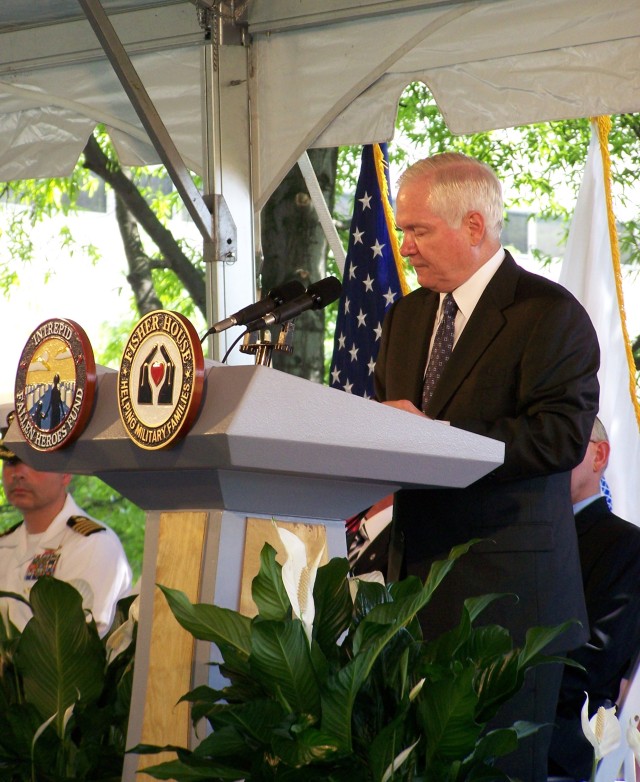


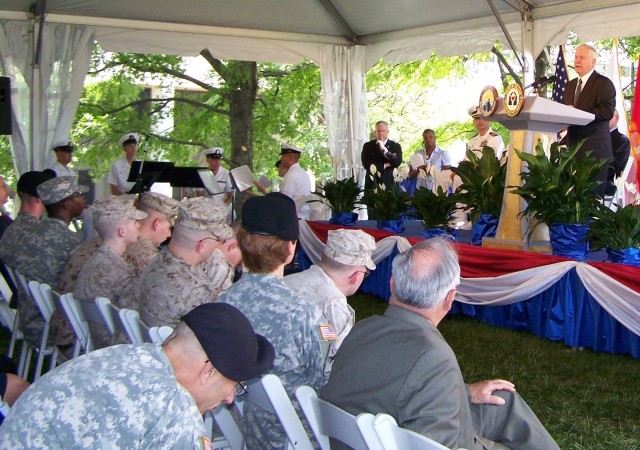
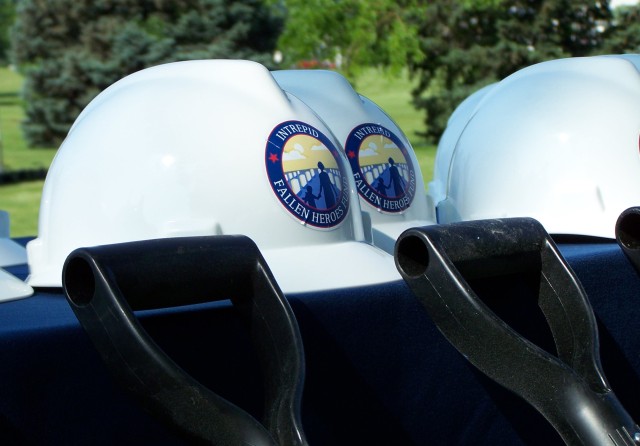
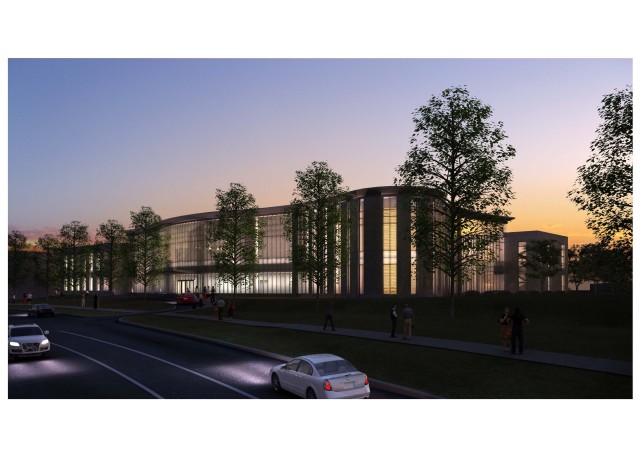
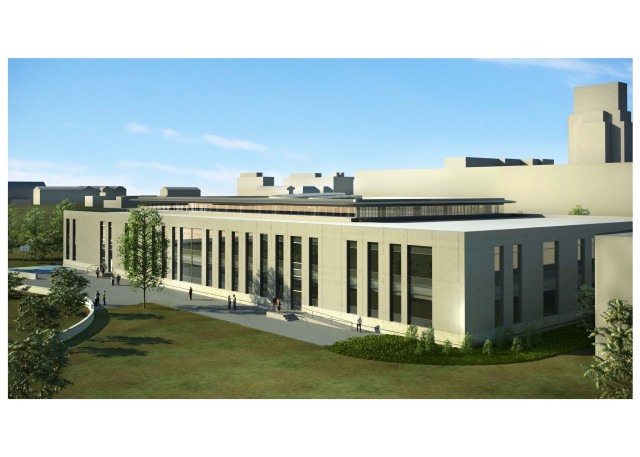









Social Sharing